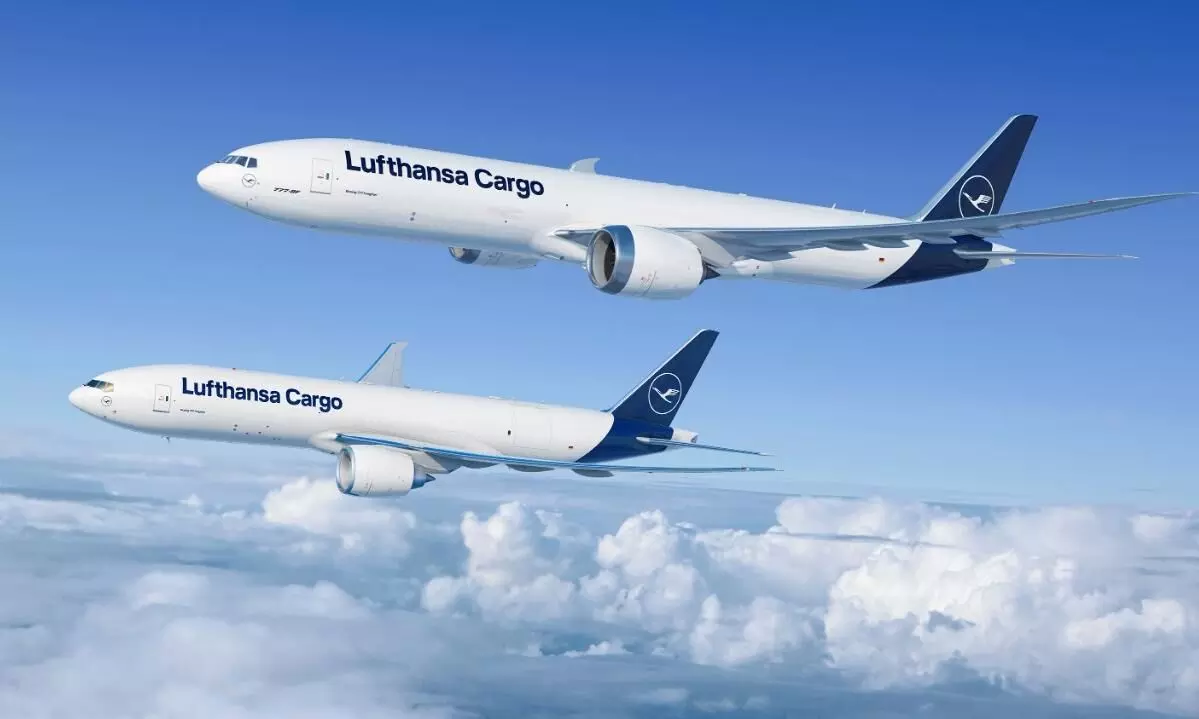
Freighter fleet to grow by 80% including new & converted models: Boeing
Over the next 20 years, airplane deliveries and commercial services together valued at $10.8 trillion. Freighter fleet to grow by 80% including new and converted models

Boeing's 2022 Commercial Market Outlook (CMO) released earlier today predicts continued robust demand for dedicated freighters to support global supply chains and growing express networks.
Carriers will need 2,800 additional freighters overall, including 940 new widebody models in addition to converted narrow-body and widebody freighters over the forecast period. These insights were a part of Boeing's2022 Commercial Market Outlook (CMO) that was launched today and which showcases the company's annual long-term forecast, in advance of the Farnborough International Airshow.
The company also projected demand for more than 41,000 new airplanes through 2041, underscoring aviation industry resilience two years after the pandemic began. The CMO forecasts a market value of $7.2 trillion for new airplane deliveries, with the global fleet increasing by 80% through 2041 compared to 2019 pre-pandemic levels.
Approximately half of passenger jet deliveries will replace today's models, improving the global fleet's fuel efficiency and sustainability. In addition, Boeing Global Services forecasts $3.6 trillion in demand in its market segments over the same time period, including strong demand for maintenance and modifications such as converted freighters; digital solutions that increase efficiency and reduce cost; and effective training to enable the supply of pilots and technicians.
"Despite the unprecedented disruption over the past two years, the aviation industry has shown incredible resilience adapting to the challenge," said Ihssane Mounir, Boeing's senior vice president of Commercial Sales and Marketing. "The 2022 CMO draws upon our expertise forecasting market trends to demonstrate the strong demand for new airplanes and related services in the coming decades, providing a waypoint as the industry continues to navigate its recovery."
The 2022 CMO includes these regional projections in the next 20 years:
- Continuing their strong growth story, Asian markets account for roughly 40% of long-term global demand for new airplanes. Europe and North America each account for just over 20% of demand, with 15% of deliveries going to other regions.
- South Asia's fleet continues to lead global growth, at 6.2% annually. Led by India, the region's fleet will nearly quadruple from 700 airplanes in 2019 to more than 2,600 airplanes through 2041. Southeast Asia is projected to see the second-fastest growth with a near-tripling of its commercial fleet to 4,500 airplanes.
- This year's CMO does not include a forecast for airplane deliveries to Russia due to sanctions against aircraft exports. This change reduces global 20-year demand by about 1,500 airplanes compared to last year's CMO.
Single-aisle airplanes will account for 75% of all new deliveries, unchanged from last year's CMO, and totaling nearly 31,000 airplanes. Through 2041, new widebody airplanes will account for about 18% of deliveries with more than 7,200 airplanes, enabling airlines to serve new and existing markets, passenger and cargo, more efficiently than in the past.
Boeing has provided the CMO annually for more than 60 years. As the longest-running jet forecast, the CMO is regarded as the most comprehensive analysis of the commercial aviation industry. Learn more about the Commercial Market Outlook. In addition, Boeing will release its Pilot and Technician Outlook on July 25.

